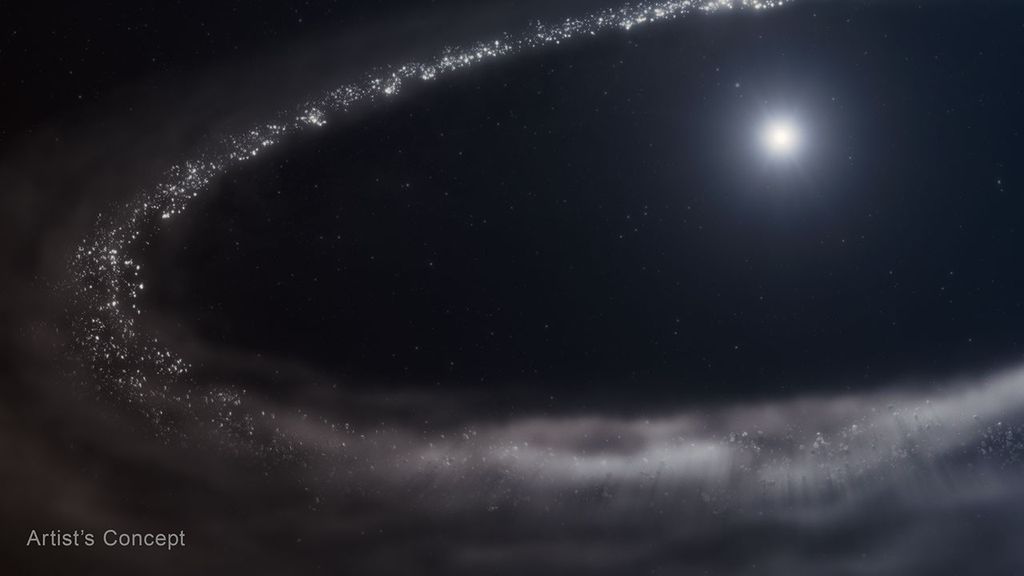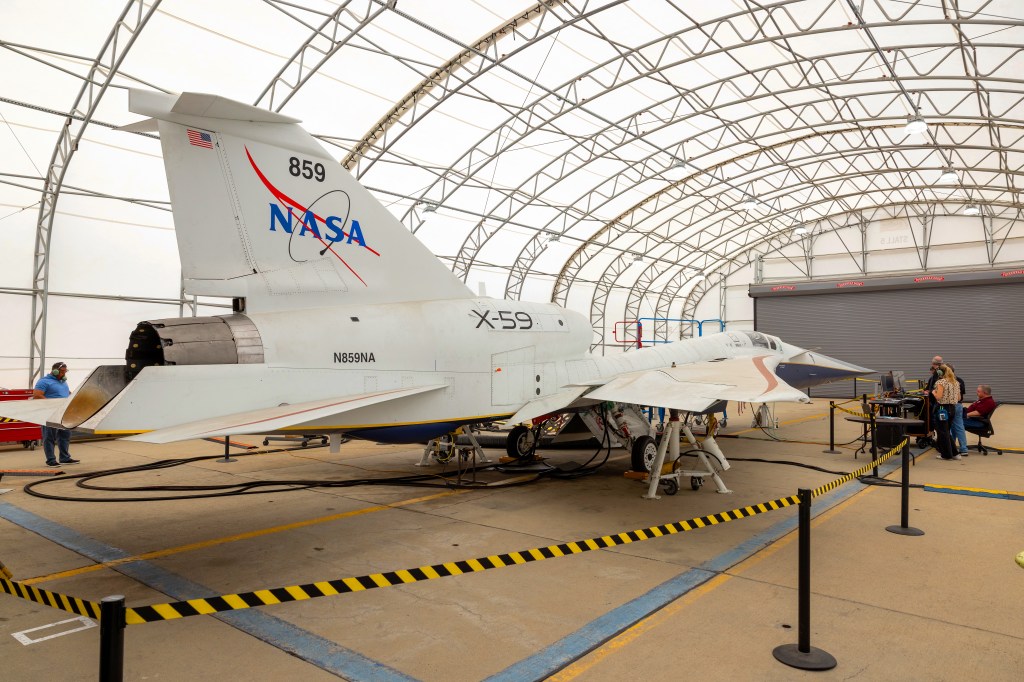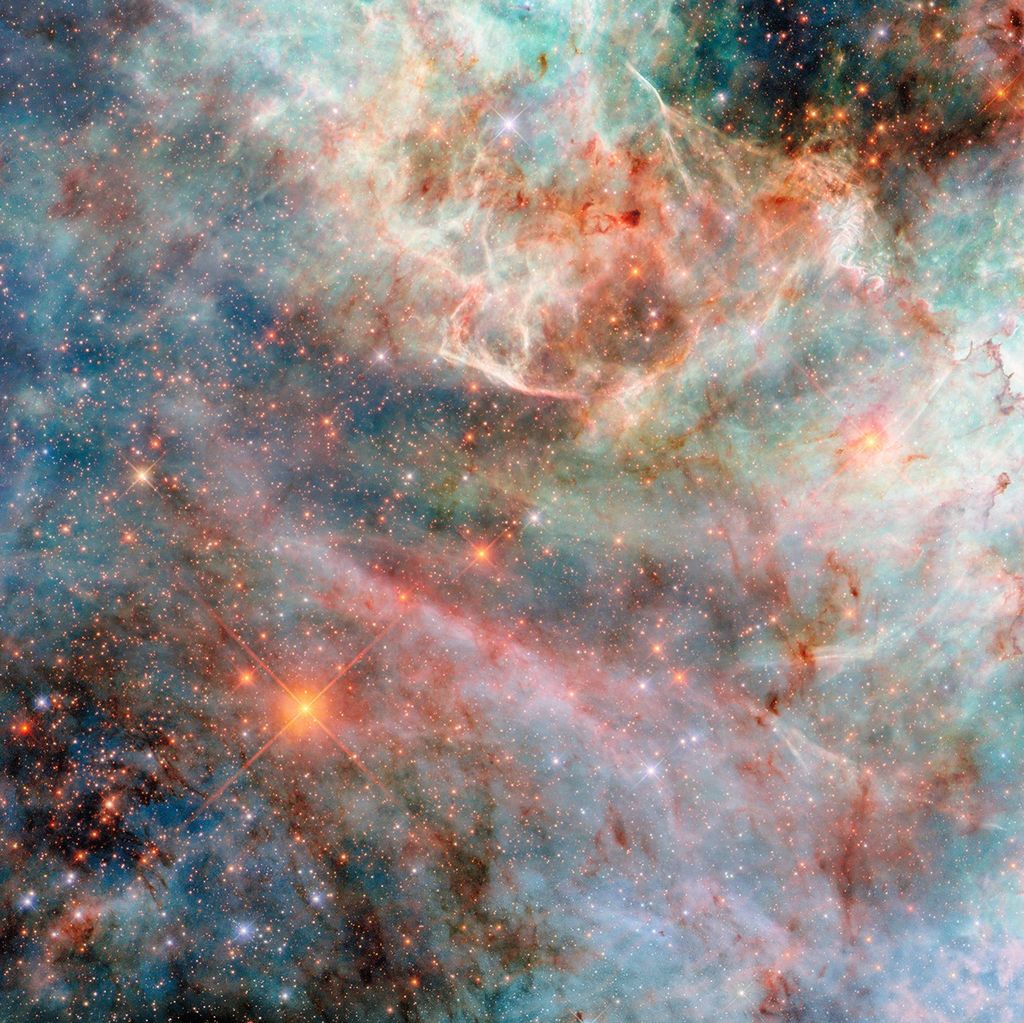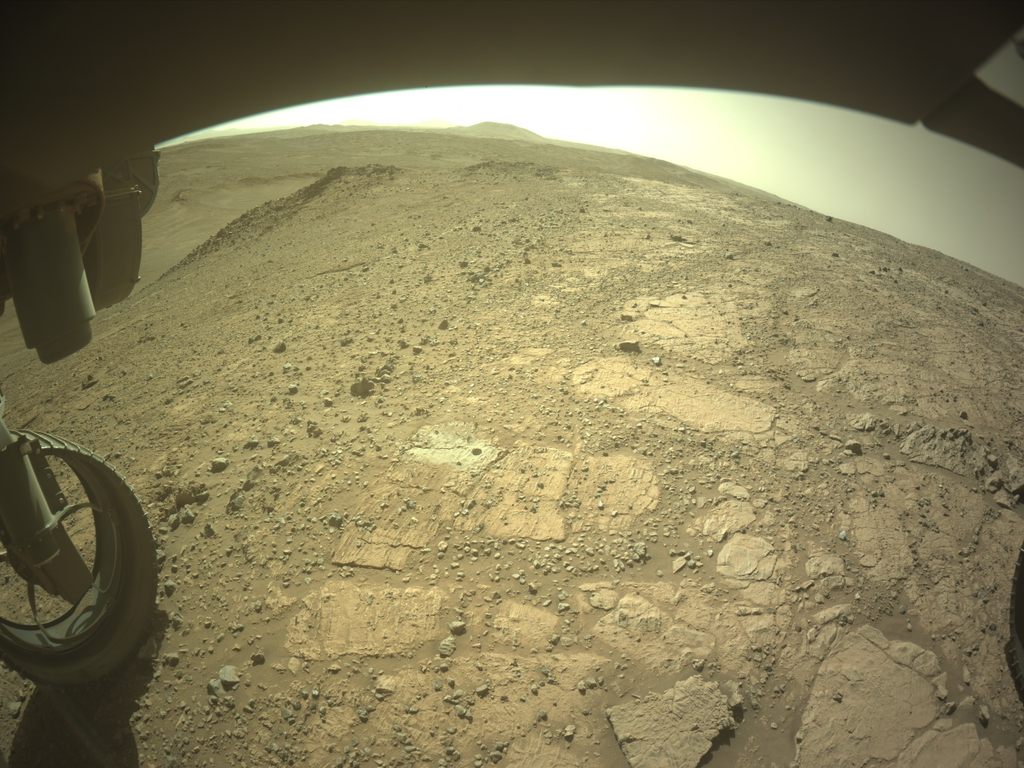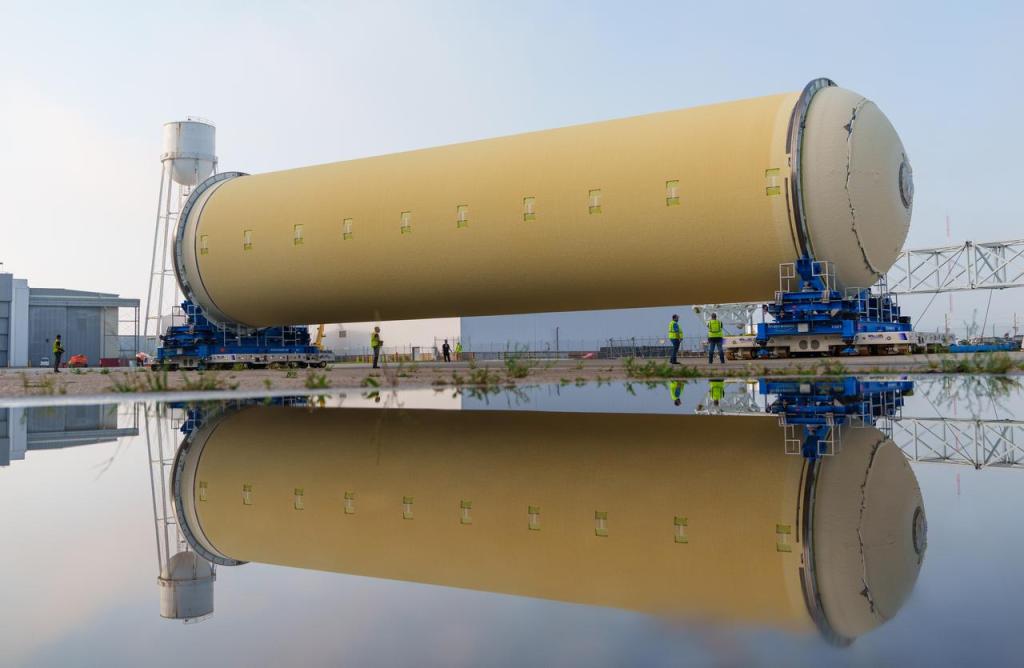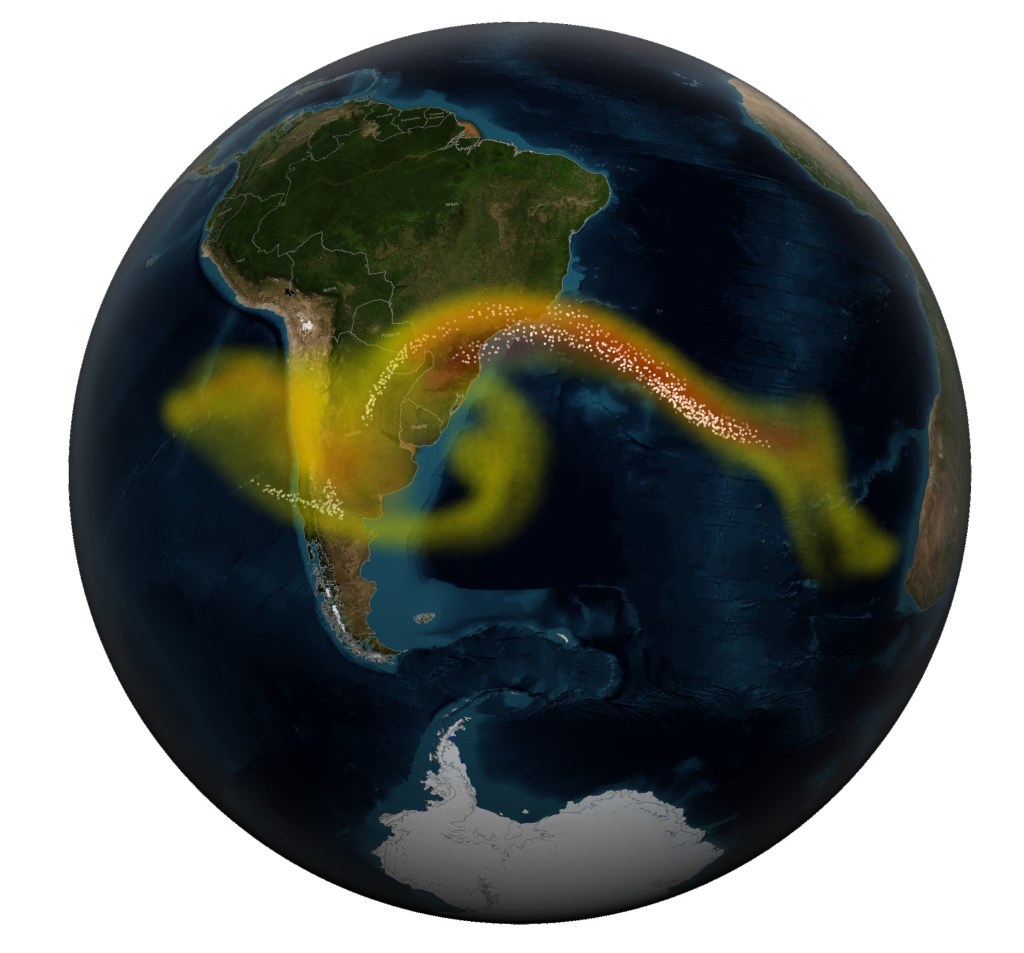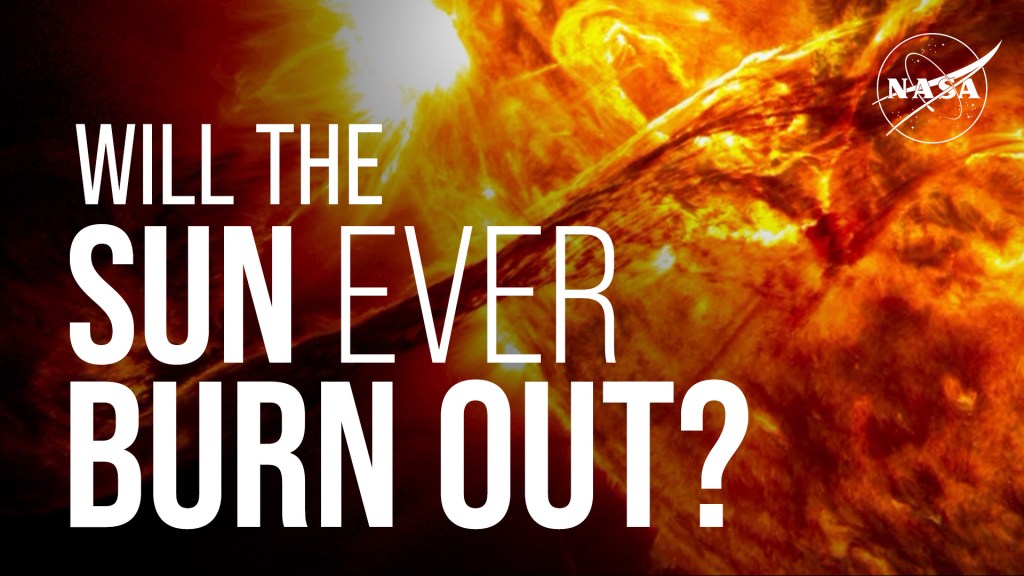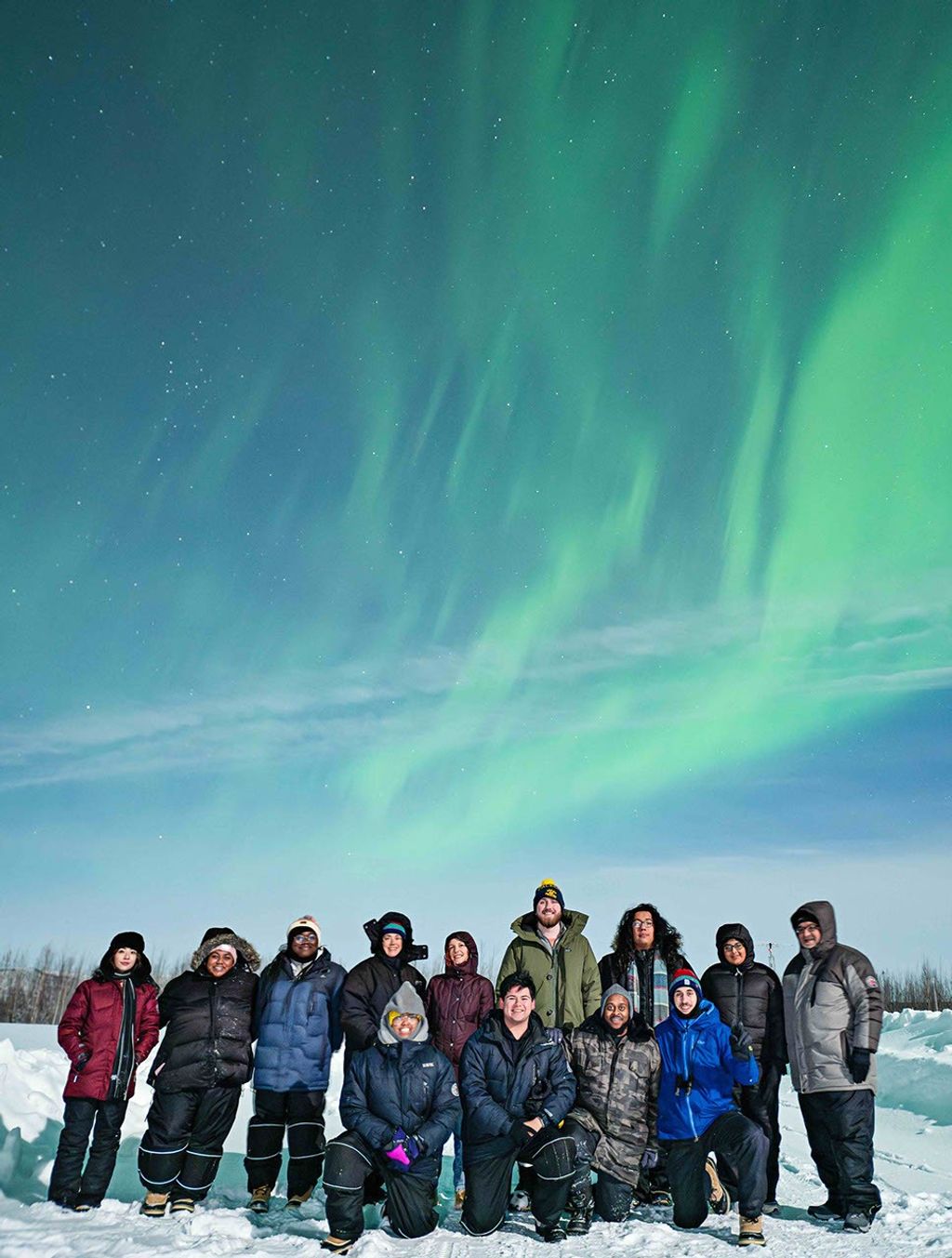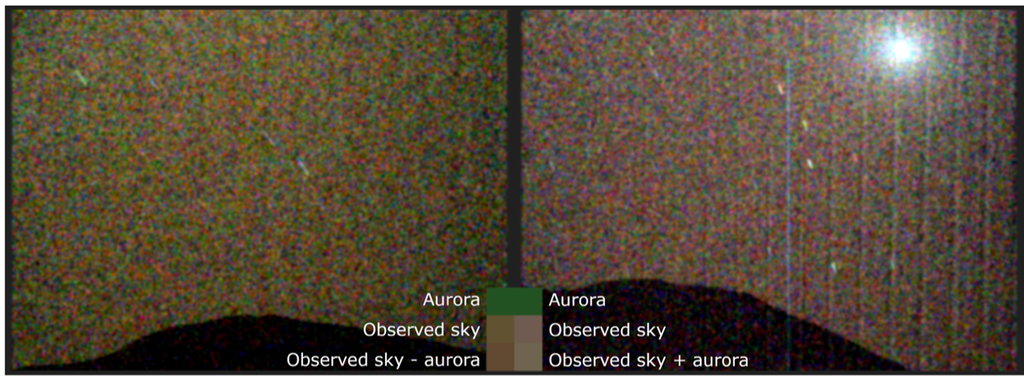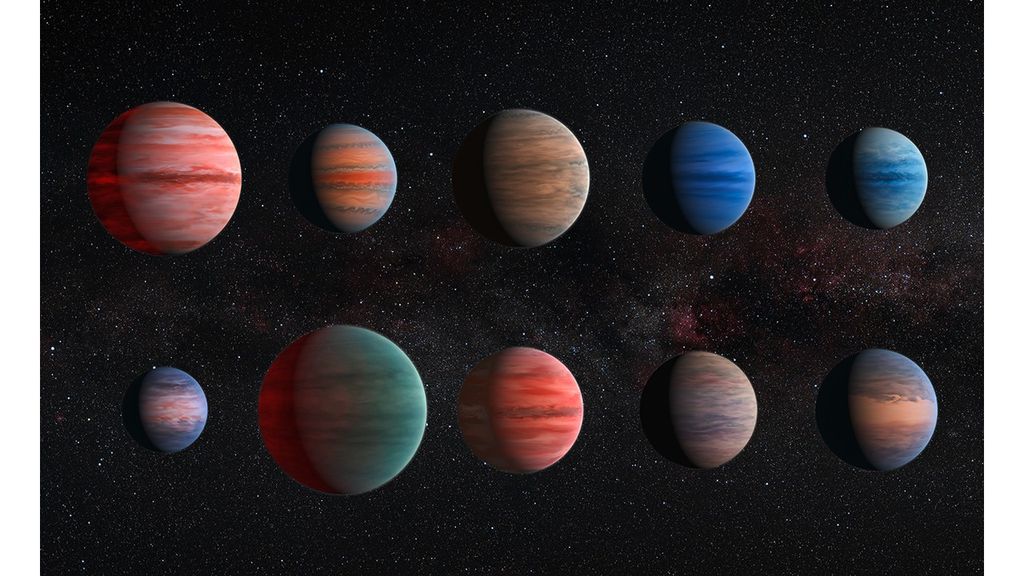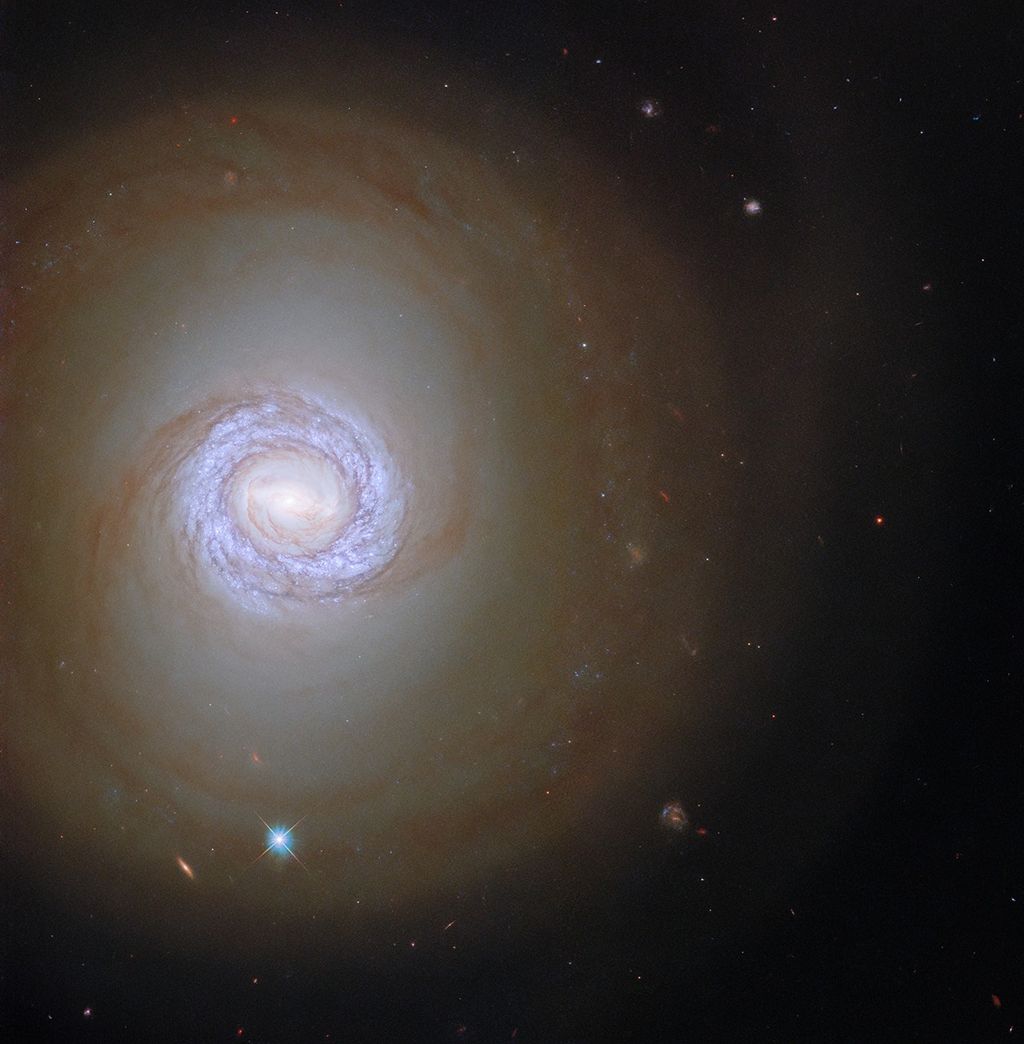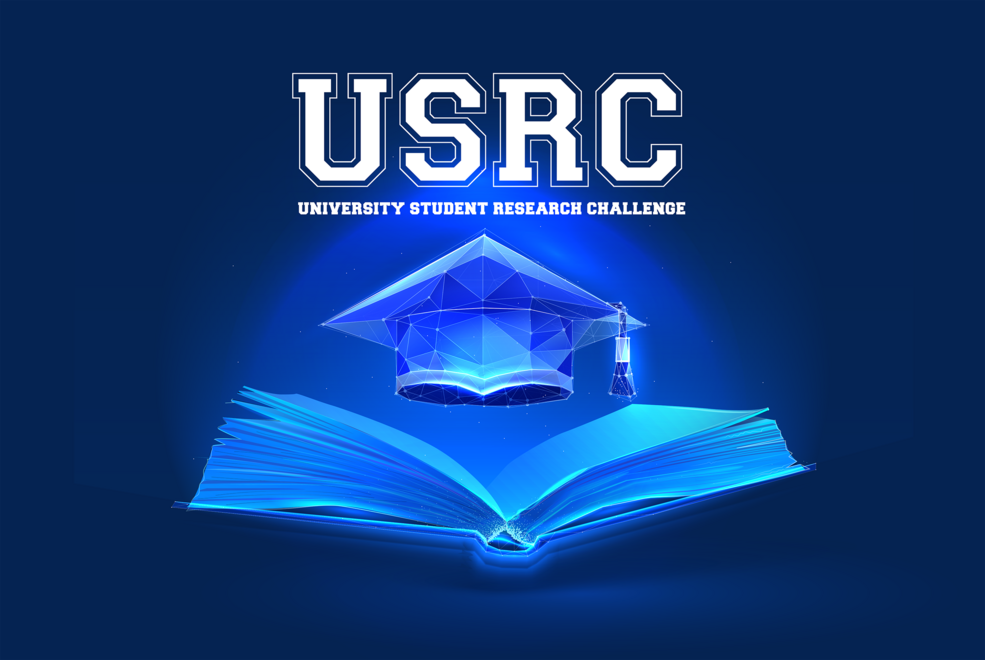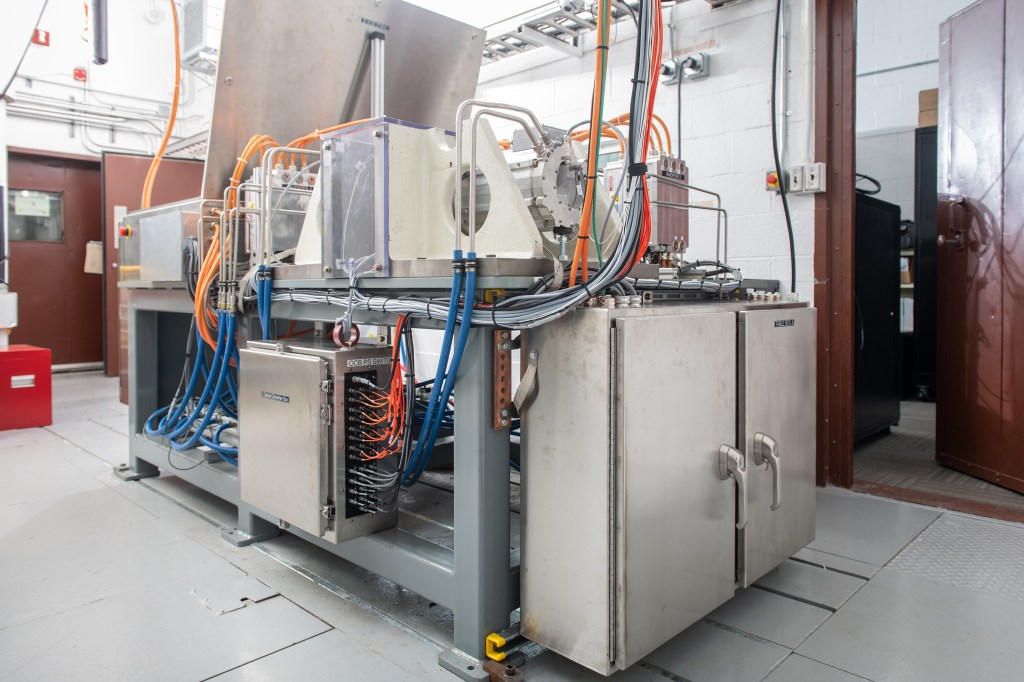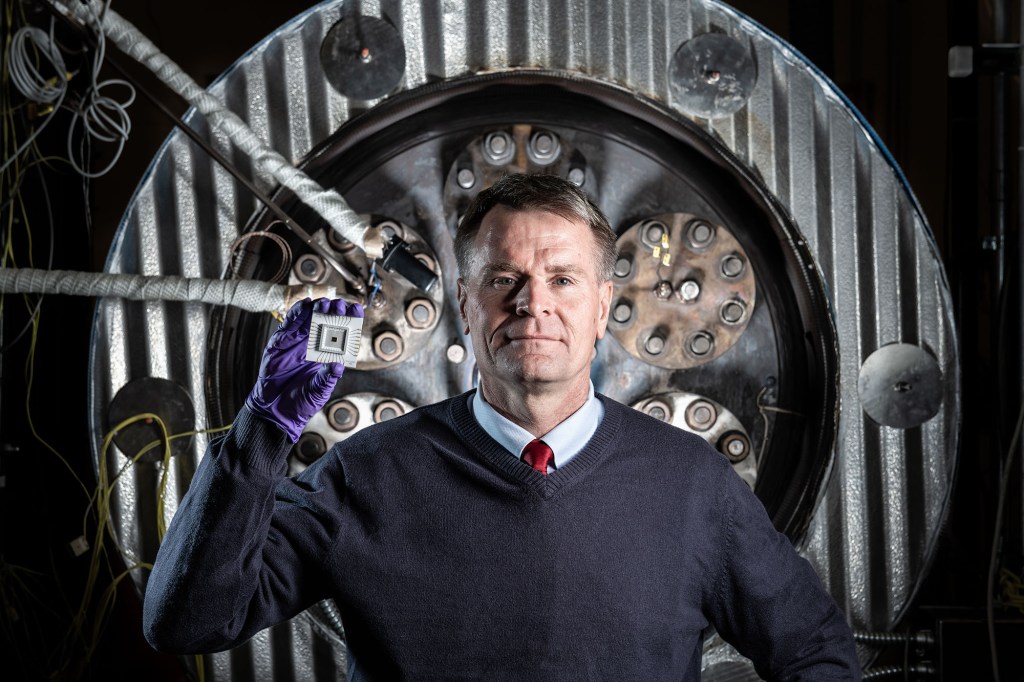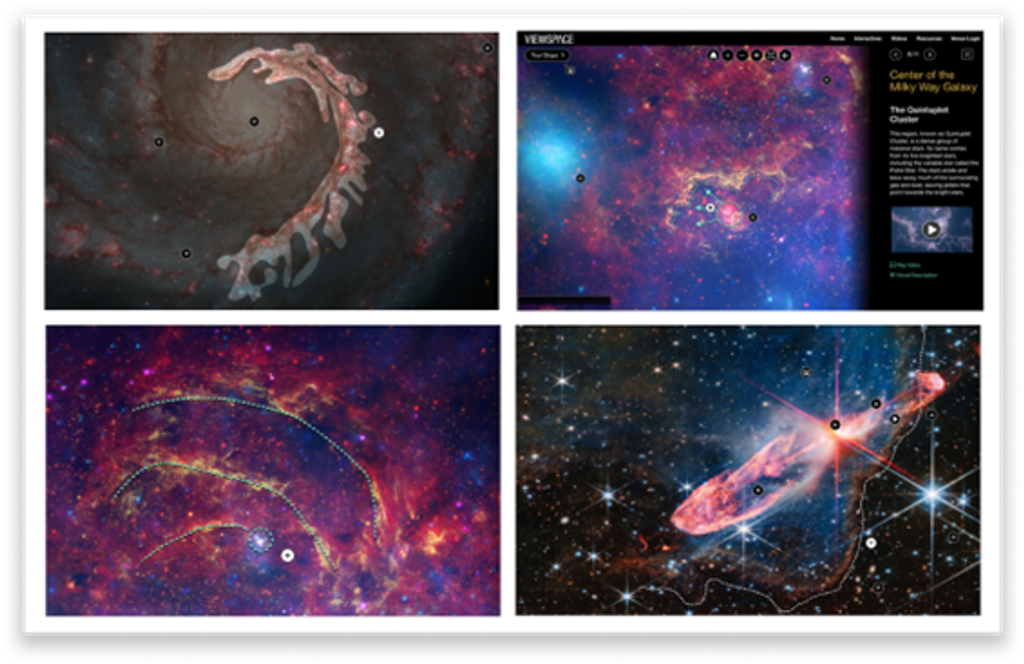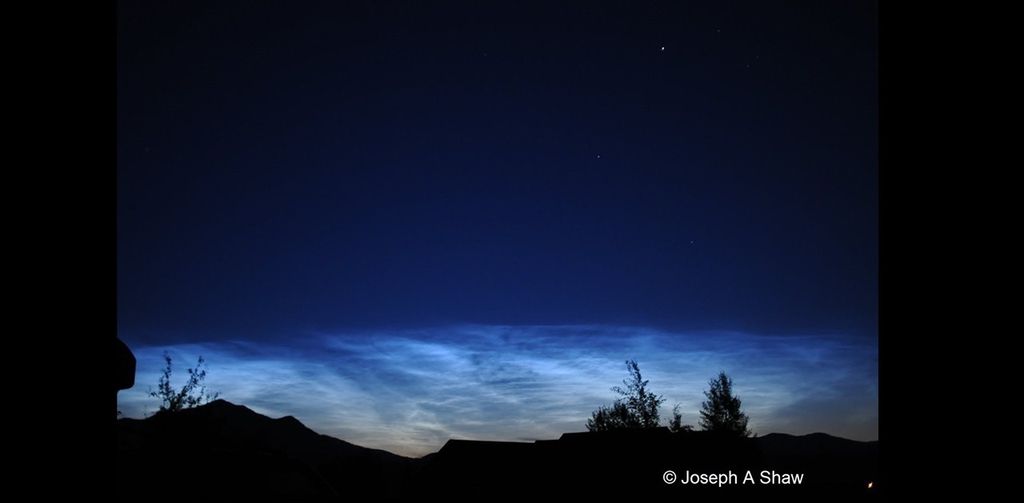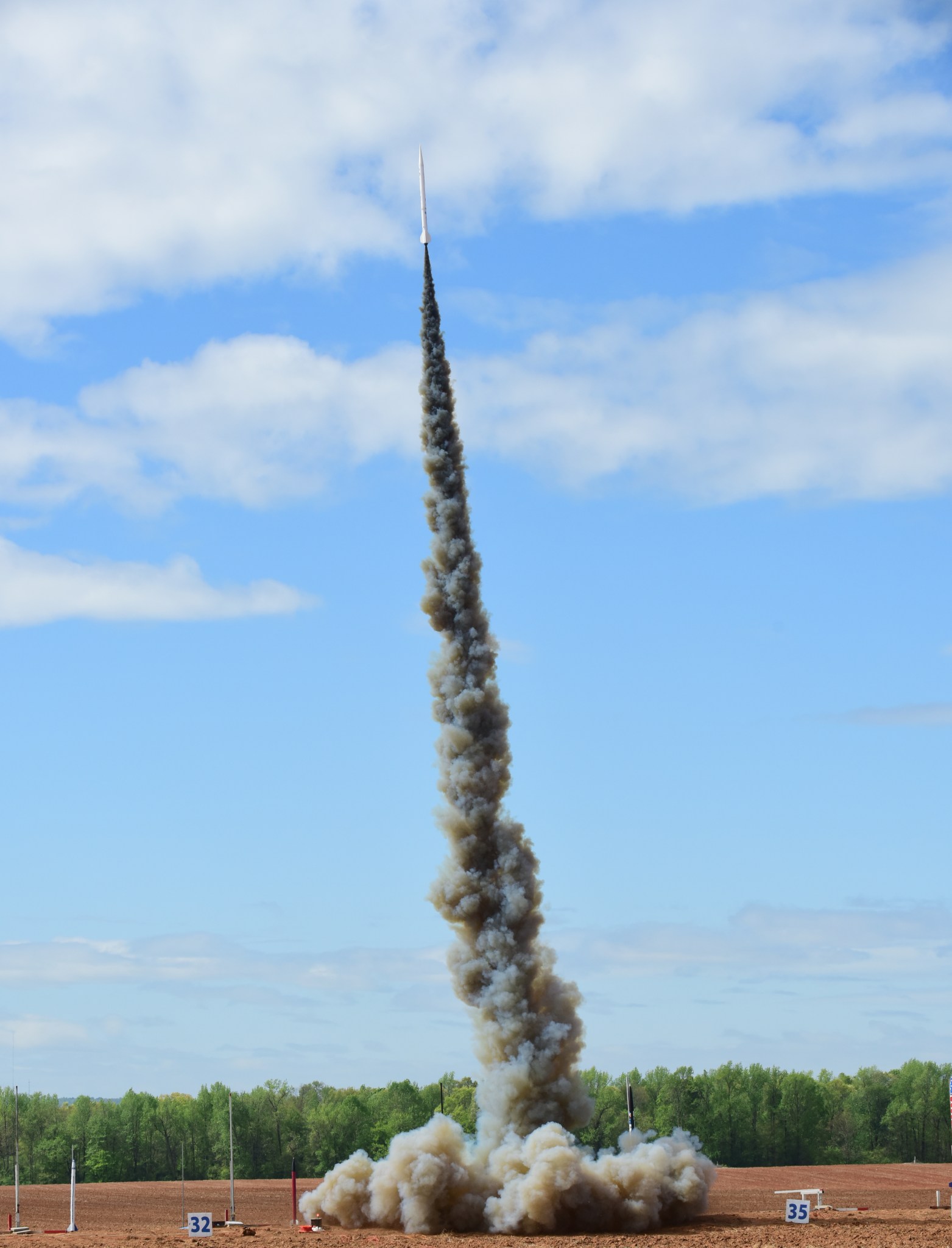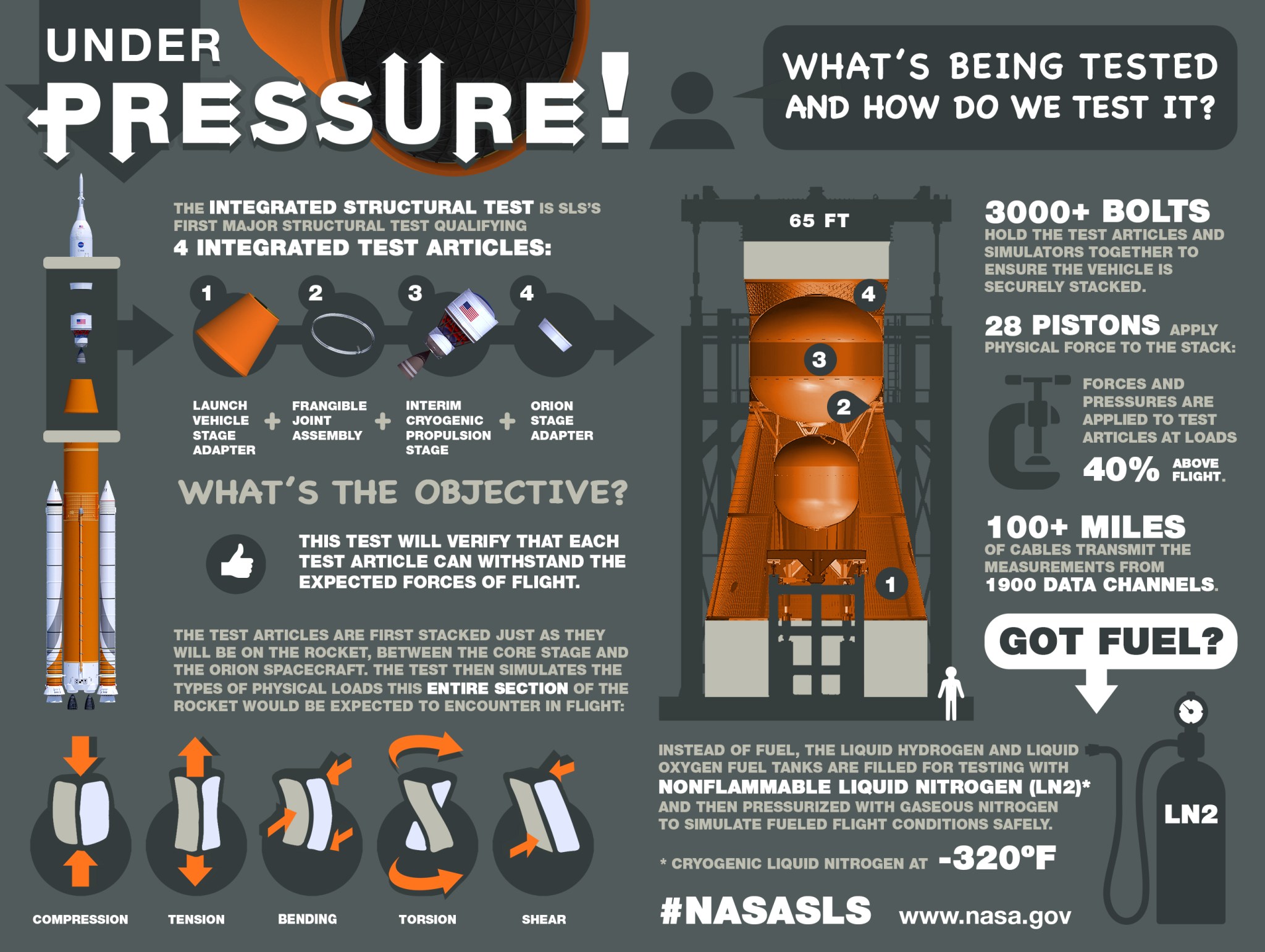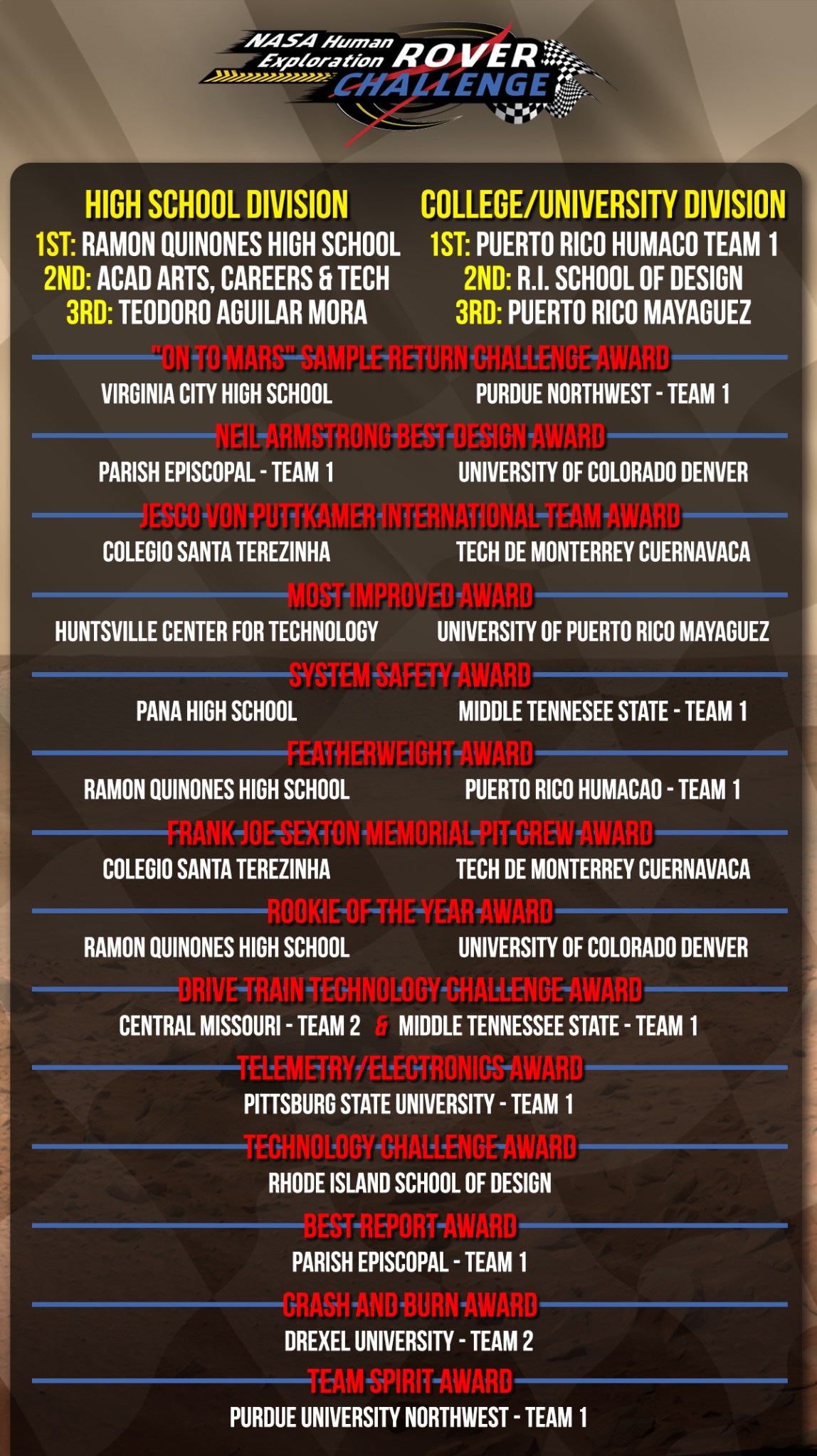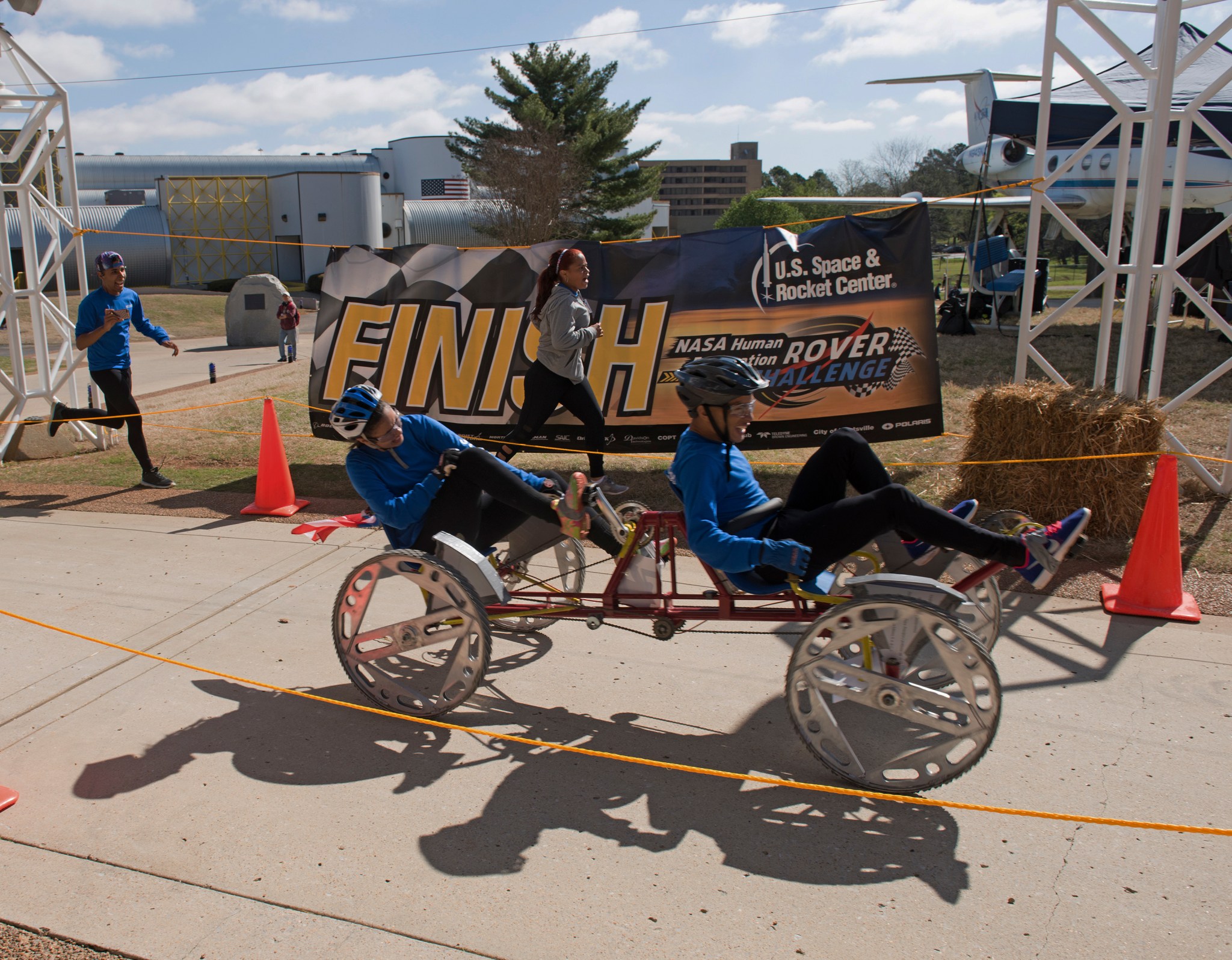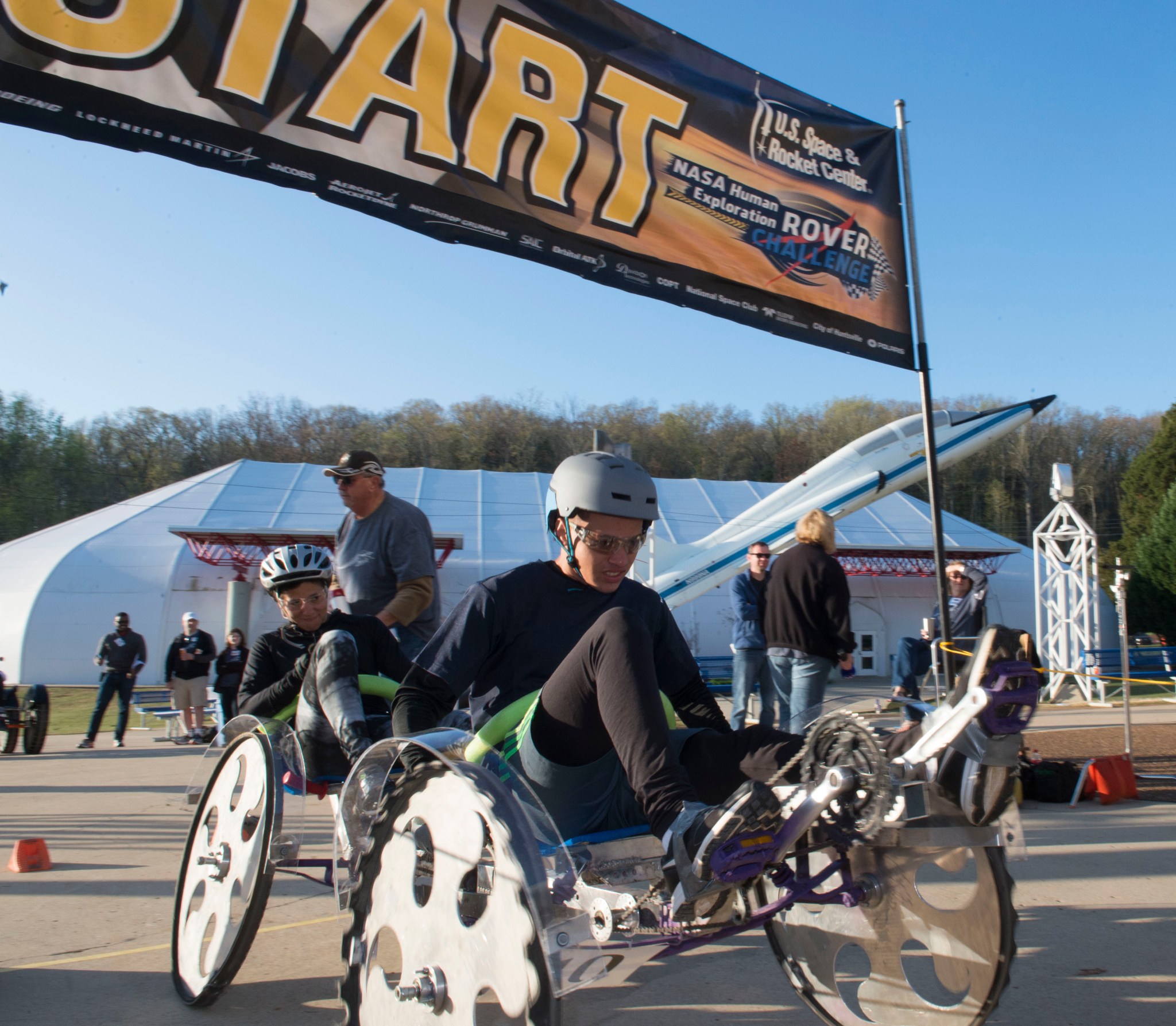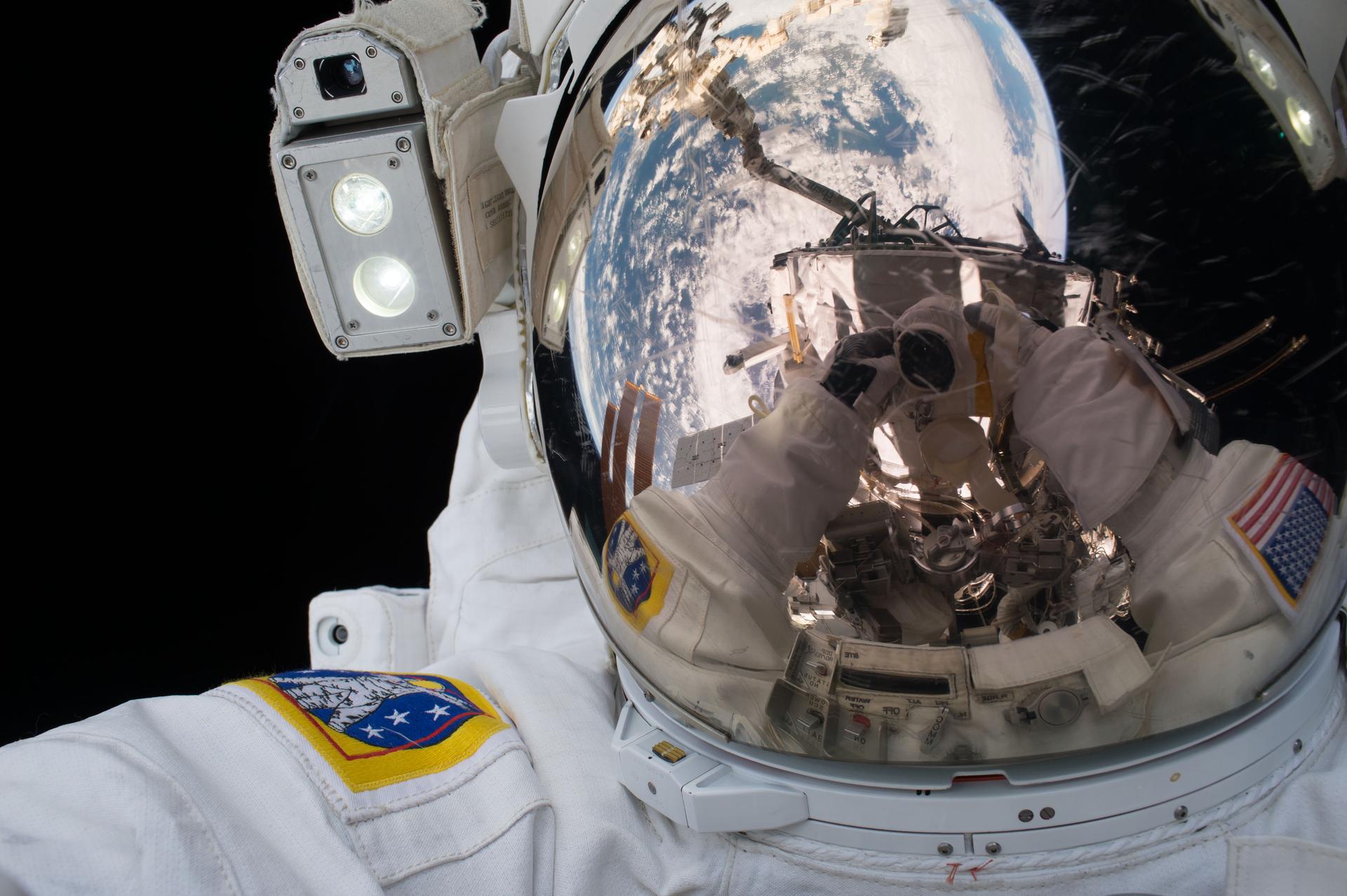In This Week’s Star
- Student Teams to Gather in North Alabama for NASA’s Student Launch
- Space Launch System Integrated Structural Tests Underway at Marshall
- Spacewalkers Connect Adapter for Commercial Crew Vehicles
- NASA Awards Facilities Engineering Design, Inspection Services Contract
- Marshall Hosts Mentor-Protégé Agreement Between Jacobs and CRM Solutions
- Puerto Rico Takes Top Spots at 2017 Human Exploration Rover Challenge
- Young Women Hear ‘Hidden Figures’ Lessons from Marshall ‘Modern Figures’
- NASA Unveils New Searchable Video, Audio and Imagery Library for the Public
- This Week in NASA History: Compton Gamma Ray Observatory Launches – April 5, 1991
- Obituaries
Student Teams to Gather in North Alabama for NASA’s Student Launch
Nearly 60 student teams will compete in NASA’s 17th annual Student Launch from 7:30 a.m.-2:30 p.m. on April 8. The high school, college and university teams from 23 states will launch their student-built rockets from Bragg Farms in Toney, Alabama, near NASA’s Marshall Space Flight Center.
Each rocket is designed to fly to an altitude of 5,280 feet, or 1 mile, deploy an automated parachute system, and safely land and recover to be eligible for prizes and awards in various divisions.
In preparation for launch, students will participate in a Rocket Fair from 4-6:30 p.m. on April 7 at the Von Braun Center’s East Hall in downtown Huntsville. Teams will showcase their rocket’s design and payload and answer questions from hundreds of engineers and team members from NASA and long-time Student Launch corporate sponsor Orbital ATK of Dulles, Virginia.
Launches are scheduled to begin April 8 at 7:30 a.m. Following the launches, the week’s events will conclude with an awards banquet, funded by Orbital ATK, from 4-6:30 p.m. on April 8, at the Davidson Center for Space Exploration at the U.S. Space & Rocket Center in Huntsville.
The rocket launches are open to the public and will stream live online on Marshall’s Ustream channel.
Student Launch is a research-based, experiential activity requiring an eight-month commitment from students to design, fabricate, test and launch a rocket, as well as complete a lengthy series of real-world comprehensive flight reviews, all overseen by NASA staff, engineers and scientists.
Orbital ATK provides awards in areas such as Best Design, Altitude, Safety and others, as well as an overall cash prize of $5,000 to the highest-ranking college/university team.
The Academic Affairs Office at Marshall manages Student Launch, working to link to NASA’s major education goal of attracting and encouraging students to pursue degrees and careers in the STEM fields of science, technology, engineering and mathematics.
NASA’s Office of Education, NASA’s Human Exploration and Operations Mission Directorate and Orbital ATK’s Propulsion Systems Division of Promontory, Utah, and the National Space Club of Huntsville provide funding and leadership.
Space Launch System Integrated Structural Tests Underway at Marshall
Testing is underway at NASA’s Marshall Space Flight Center on the agency’s new Space Launch System, the world’s most powerful rocket. The first major structural test series of SLS, the Integrated Structural Test puts “pressure” on four qualification articles to ensure the upper elements of the rocket hardware can withstand the pressures of launch and flight. (NASA/MSFC)
Spacewalkers Connect Adapter for Commercial Crew Vehicles
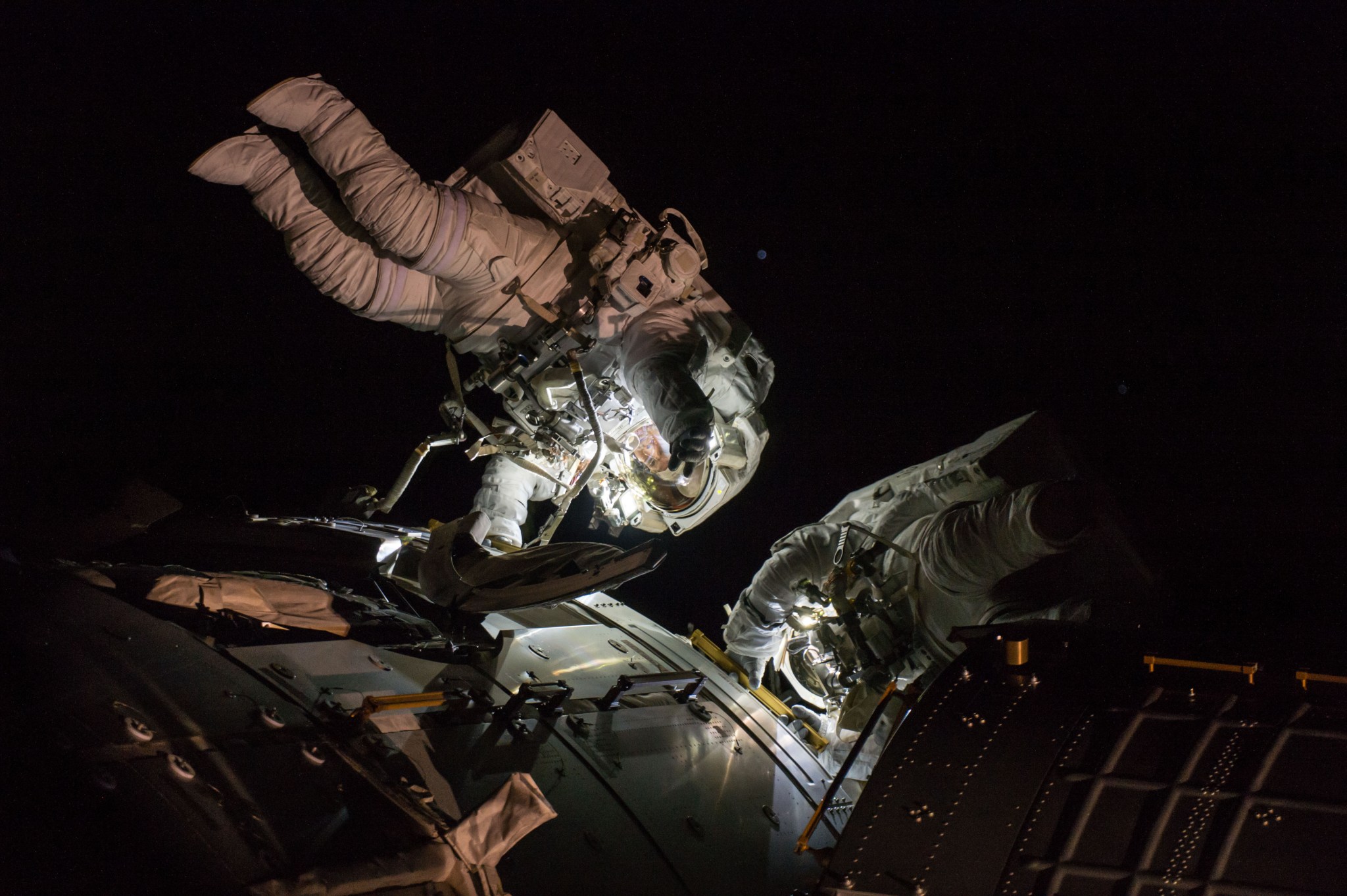
As the International Space Station races toward another sunrise, NASA astronauts Shane Kimbrough and Peggy Whitson successfully reconnect cables and electrical connections on Pressurized Mating Adapter-3 during a seven-hour spacewalk outside the station on March 30. The adapter will provide a pressurized interface between the station and a new international docking adapter to support future dockings of U.S. commercial crew spacecraft. The activity was Whitson’s eighth spacewalk, setting a new record for the most spacewalks and accumulated time spacewalking by a female astronaut. (NASA)
NASA Awards Facilities Engineering Design, Inspection Services Contract
NASA has awarded an architect and engineering services contract to Accura Rosser 8(a) JV of Atlanta to perform engineering design and inspection services at the Marshall Space Flight Center.
The cost-plus-fixed-fee contract began April 1 and includes a one-year base period, followed by four one-year options for a maximum five-year performance period. The value of the contract, including all options, is approximately $39.8 million.
Under the Facilities Design and Inspection Services contract, the contractor will perform a wide range of support services, including design and inspection services, master planning and surveillance. This contract will support Marshall in accomplishing institutional, program and project objectives for NASA, resident organizations, onsite contractors and onsite commercial tenants.
Marshall Hosts Mentor-Protégé Agreement Between Jacobs and CRM Solutions
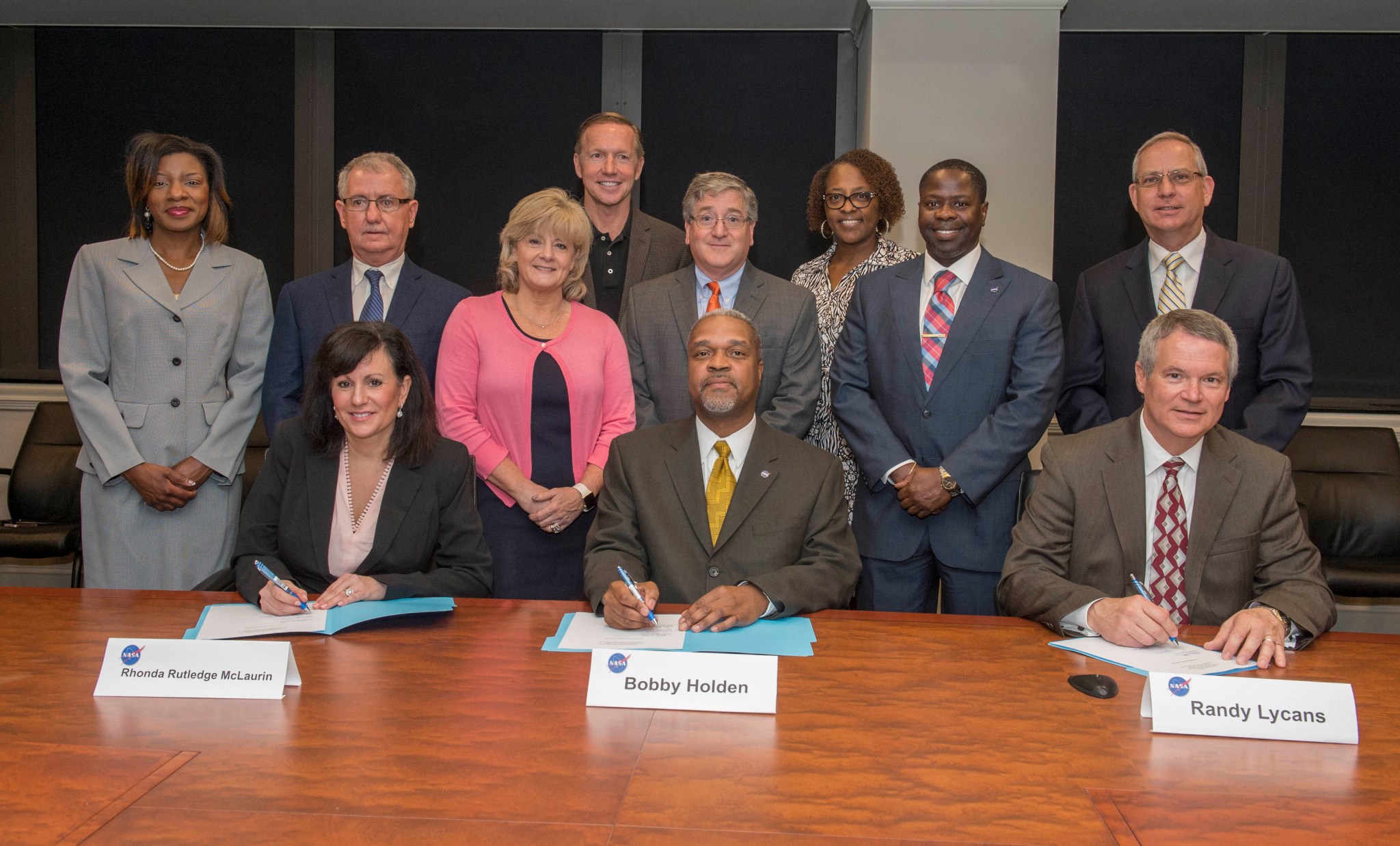
Representatives of NASA’s Marshall Space Flight Center, NASA prime contractor Jacobs Technology Inc. of Huntsville and CRM Solutions, a woman-owned Historically Under-utilized Business Zone-certified small business in Huntsville, sign a mentor-protégé agreement at Marshall on March 28. This marks Marshall’s 15th mentor-protégé agreement signing, and the fourth between a prime contractor and a HUBZone-certified small business. Participating are, seated from left, Rhonda Rutledge McLaurin, CRM Solutions president and CEO; Bobby Holden, Marshall contracting officer; and Randy Lycans, Jacobs vice president and general manager. Also from Marshall are, standing from left, Alicia Carroll, small business technical coordinator; David Brock, small business specialist; Jody Singer, Marshall’s deputy director; Steve Miley, director of procurement; David Iosco, deputy director of procurement; Andrea Tobias, contracting officer; James Bailey, supervisory contracting officer; and T.K. Pendergrass, Engineering & Science Services and Skills Augmentation contracting officer representative. The NASA Mentor-Protégé Program encourages NASA prime contractors to assist eligible protégés, thereby enhancing the protégés’ capabilities to perform NASA contracts and subcontracts, fostering the establishment of long-term business relationships between these entities and NASA prime contractors, and increasing the overall number of these entities that receive NASA contract and subcontract awards. (NASA/MSFC/Emmett Given)
Puerto Rico Takes Top Spots at 2017 Human Exploration Rover Challenge
By Megan Davidson
NASA has announced the winners of the 2017 Human Exploration Rover Challenge, held March 31 and April 1 at the U.S. Space & Rocket Center in Huntsville.
Ramon Quinones Medina High School of Yabucoa, Puerto Rico, won first place in the high school division, with a time of 4 minutes, 12 seconds. The University of Puerto Rico at Humacao Team 1 won the college/university division with a time of 4 minutes, 21 seconds. Both teams had the fastest race times in their divisions, with the fewest on-course penalties.
The event requires student teams to design, build, test and race human-powered rovers, driven by one male and one female. The obstacles throughout the nearly three-quarter-mile course simulate terrain found on Mars, as well as other planets, moons and asteroids throughout the solar system.
This year’s race had a new, optional feature called the “Drive Train Technology Challenge.” Teams developed reliable systems such as belts, drive shafts or direct drives to replace commonly used chains.
Nearly 100 high school and college teams took part in the competition, coming from 23 states, the District of Columbia and Puerto Rico, as well as several countries, including Brazil, Germany, India and Mexico.
Rover Challenge highlights NASA’s goals for future exploration to Mars and beyond. Inspired by the lunar roving vehicles of the Apollo moon missions, the competition challenges students to solve engineering problems, while highlighting NASA’s commitment to inspiring new generations of scientists, engineers and explorers. It is hosted by NASA’s Marshall Space Flight Center and the U.S. Space & Rocket Center, and is managed by Marshall’s Academic Affairs Office.
Click here for more information on Rover Challenge and here for an expanded list of winners.
Davidson, an ASRC Federal/Analytical Services employee, supports the Office of Strategic Analysis & Communications.
Young Women Hear ‘Hidden Figures’ Lessons from Marshall ‘Modern Figures’
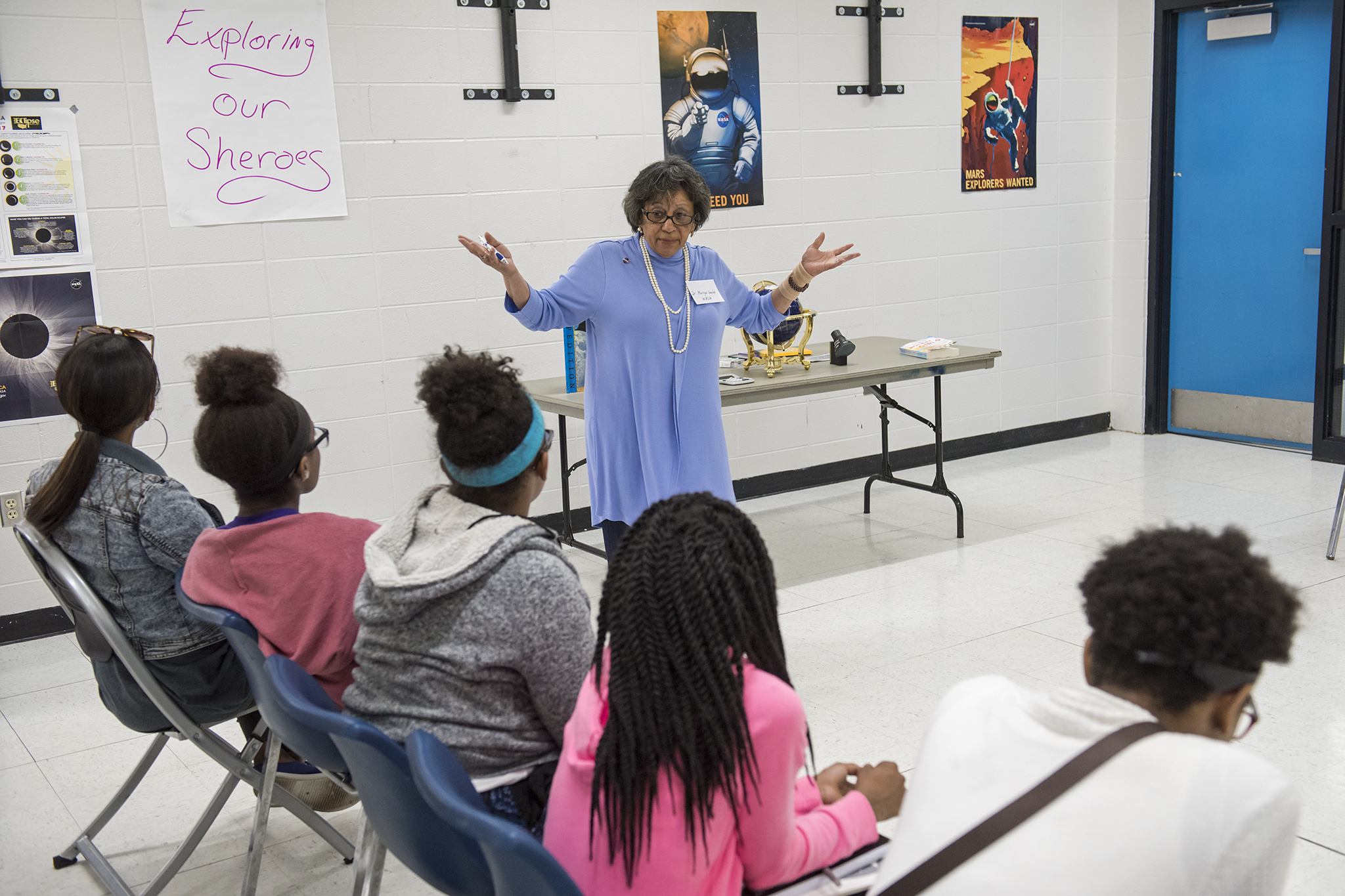
Marilyn Lewis, an education programs specialist with AETOS Systems in NASA’s Marshall Space Flight Center Office of Human Capital, tells teenagers in a Girls Inc. of Huntsville meeting March 21 about lessons they can learn from the book and movie “Hidden Figures.” Focusing on the true stories of Katherine Johnson, Mary Jackson and Dorothy Vaughan, “Hidden Figures” showcases African-American women who were essential to the success of early spaceflight. Lewis and other Marshall speakers, including Shelia Nash-Stevenson, Albanie Bolton and Laveda Jackson, also shared their personal experiences about the importance of role models and education in their success. (NASA/MSFC/Charles Beason)
NASA Unveils New Searchable Video, Audio and Imagery Library for the Public
NASA officially has launched a new resource for the agency’s out-of-this-world images, videos and audio — images.nasa.gov. The files are searchable by keyword and metadata searches from NASA.gov. The NASA Image and Video Library website consolidates imagery spread across more than 60 collections into one searchable location.
“The process started several years ago,” said NASA Marshall Space Flight Center’s Rodney Grubbs, manager for NASA Imagery Experts Program. “We started by standardizing the way we manage data about imagery and video, then we had a company build the architecture — based entirely in the cloud. Now we have a great collection of the best of the best.”
NASA Image and Video Library allows users to search, discover and download a treasure trove of more than 140,000 NASA images, videos and audio files from across the agency’s many missions in aeronautics, astrophysics, Earth science, human spaceflight and more. Users now can embed content in their own sites and choose from multiple resolutions to download. The website also displays the metadata associated with images.
Users can browse the agency’s most recently uploaded files, as well as discover historic and the most popularly searched images, audio files and videos. The new database also:
- Automatically scales the interface for mobile phones and tablets
- Displays the file format and camera data, including exposure, lens used and other information, when available
- Allows for easy public access to high resolution files
- Includes a downloadable caption file for all videos
NASA Image and Video Library’s Application Programmers Interface allows automation of imagery uploads for NASA, and gives members of the public the ability to embed content in their own sites and applications. This public site runs on NASA’s cloud native “infrastructure-as-a-code” technology enabling on-demand use in the cloud.
The library is not comprehensive, but rather provides the best of what NASA makes publicly available from a single point of presence on the web. Additionally, it is a living website, where new and archival images, video and audio files continually will be added.
This Week in NASA History: Compton Gamma Ray Observatory Launches – April 5, 1991
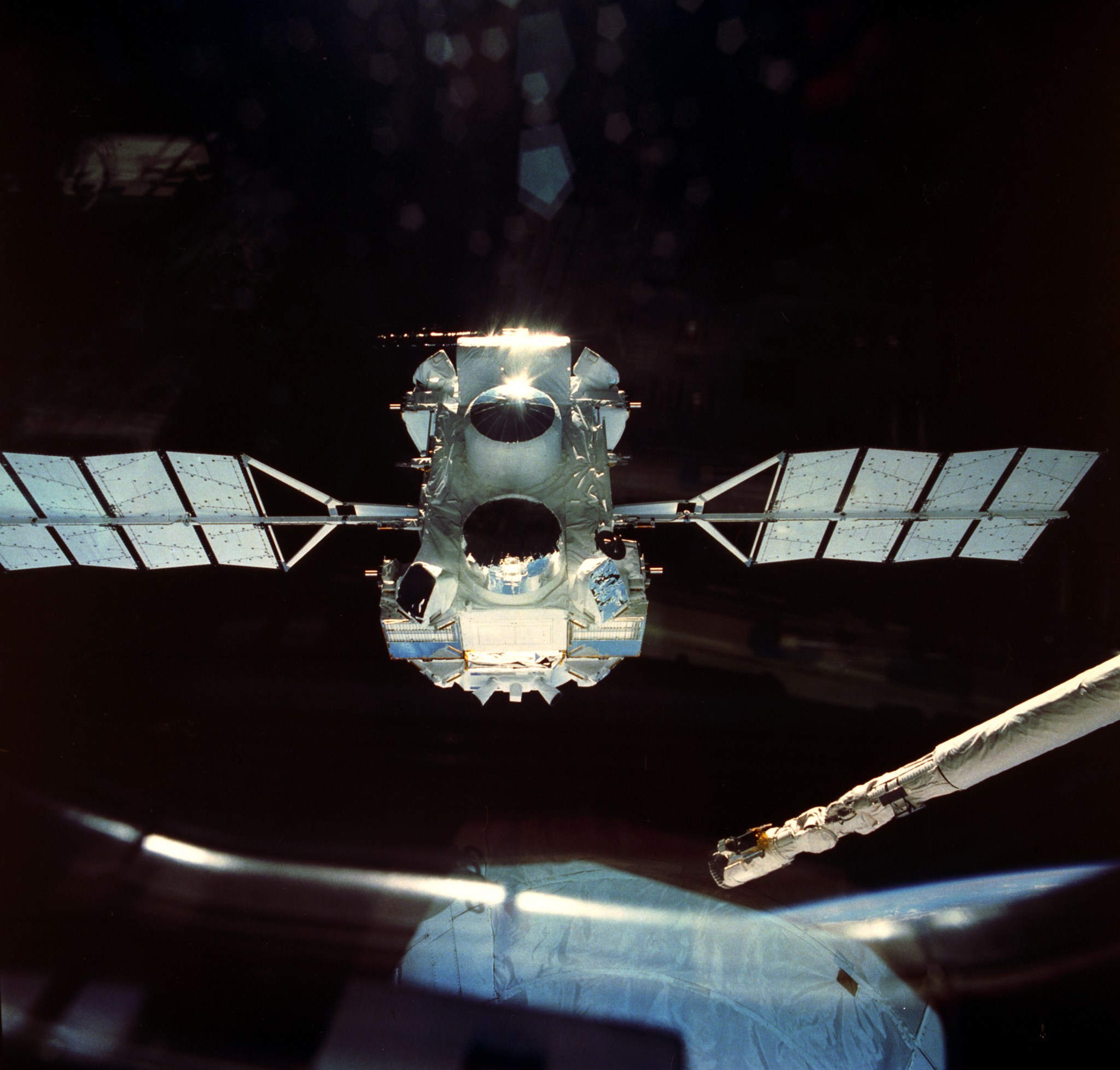
This week in 1991, space shuttle Atlantis and STS-37 launched from NASA’s Kennedy Space Center. The primary mission objective of STS-37 was to deliver NASA’s second Great Observatory, the Compton Gamma Ray Observatory. Here, Compton is being released from Atlantis’ Remote Manipulator System arm. The Burst and Transient Source Experiment, one of four major science instruments aboard the Compton, was designed and built by NASA’s Marshall Space Flight Center. Marshall has been involved in the development of many of the agency’s optical instruments notably, NASA’s Great Observatories. Marshall managed the development of NASA’s Hubble Space Telescope and the Chandra X-ray Observatory. Marshall has also played a significant role in the testing of Hubble’s successor, the James Webb Space Telescope. Scheduled to launch in October 2018, the Webb telescope will observe the most distant objects in the universe, provide images of the first galaxies formed and see unexplored planets around distant stars. The NASA History Program is responsible for generating, disseminating, and preserving NASA’s remarkable history and providing a comprehensive understanding of the institutional, cultural, social, political, economic, technological, and scientific aspects of NASA’s activities in aeronautics and space. For more pictures like this one and to connect to NASA’s history, visit the Marshall History Program’s webpage. (NASA)
Obituaries
George Archer Ferrell IV, 94, of Huntsville, died March 29. He retired from the Marshall Center in 1977 as a mechanical engineer. He is survived by his wife, Margaret W. Ferrell.

